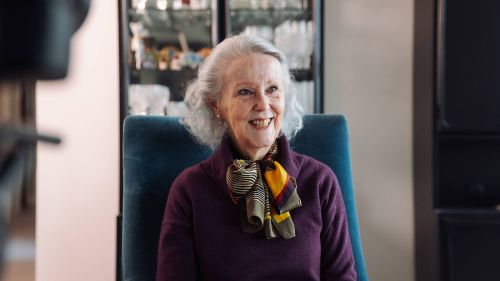Edith Cowan University (ECU) Professor Helena Grehan will lead a project transforming the way some of Western Australia's most significant, and fragile, scientific objects are preserved and studied, thanks to a $1,197,450 Australian Research Council Linkage Infrastructure, Equipment and Facilities (LIEF) grant.
The project, delivered in partnership with The University of Western Australia, Curtin University, Murdoch University and the Western Australian Museum, will establish Western Australia's first 3D Object Scanning Laboratory.
Located at the WA Museum, this new facility will give researchers the ability to create highly accurate 3D digital versions of items that are currently too delicate, valuable or rare to be handled.
It builds on the successful establishment of the Digitisation Centre of Western Australia, which digitises cultural and significant research collections to the highest of international archival standards, for all five WA universities, the State Library of Western Australia and Western Australian Museum.
"By extending the digitising capability to 3D object scanning we will be able to meet the needs of the large range of disciplines that work with vulnerable type specimen, reference and taxonomic collections," Professor Grehan said.
Creating a window into WA's rarest objects
Project partners hold extensive reference, taxonomic and type specimen collections, such as fossils, shells, meteorites, mammalian skulls and bones and rare instruments, that are of national and international significance.
Many of these specimens are type specimens, meaning they are the original reference examples used to define species or scientific classifications. They cannot be borrowed or moved due to their vulnerability and the risk of damage. As a result, they are currently accessible only to the small number of researchers who can physically travel to Western Australia and obtain special permission to view them.
Professor Grehan said the new facility will help break down these barriers.
"At present these unique Western Australian collections are not available online and mostly only accessible to the small number of researchers who can visit them in person," she said.
"By creating high-quality 3D digital versions, we are opening the door to global research without putting these irreplaceable objects at risk."
Preservation and access for future generations
The new 3D scanning technology will allow the Digitisation Centre of WA to:
- digitally preserve fragile and culturally significant objects in long-lasting 3D formats
- make them accessible online to researchers across Australia and internationally
- support new types of analysis, teaching and collaboration across multiple disciplines
- ensure the original objects remain safely protected and untouched
For the first time, a scientist on the other side of the world will be able to examine a WA fossil in full 360-degree detail, zooming in on surface textures and features that would normally require physical handling.
"This work guarantees that future generations will not lose access to these collections," Professor Grehan said.
"Even if the original objects become too fragile to display or examine, their digital versions will continue to support research and education."
The project strengthens the Digitisation Centre of WA as a major piece of national research infrastructure with growing international influence. It will support research across biology, geology, archaeology, environmental science, museum conservation, history, and the creative arts.
To learn more go to Australian Research Council LIEF 2026 grants.

 iStock: EvgeniyShkolenko
iStock: EvgeniyShkolenko



